Dormant trees reveal their stories
Now that we are in the middle of winter, deciduous trees have lost most of their leaves. This reveals so much more about the tree that was hidden. We can see the true form, and branching structures of the trees.
As I walk around in nature, I can more easily see that each kind of tree has a distinctive shape to its crown and branches. I get curious and start to pay attention to trees for the rest of my walk.
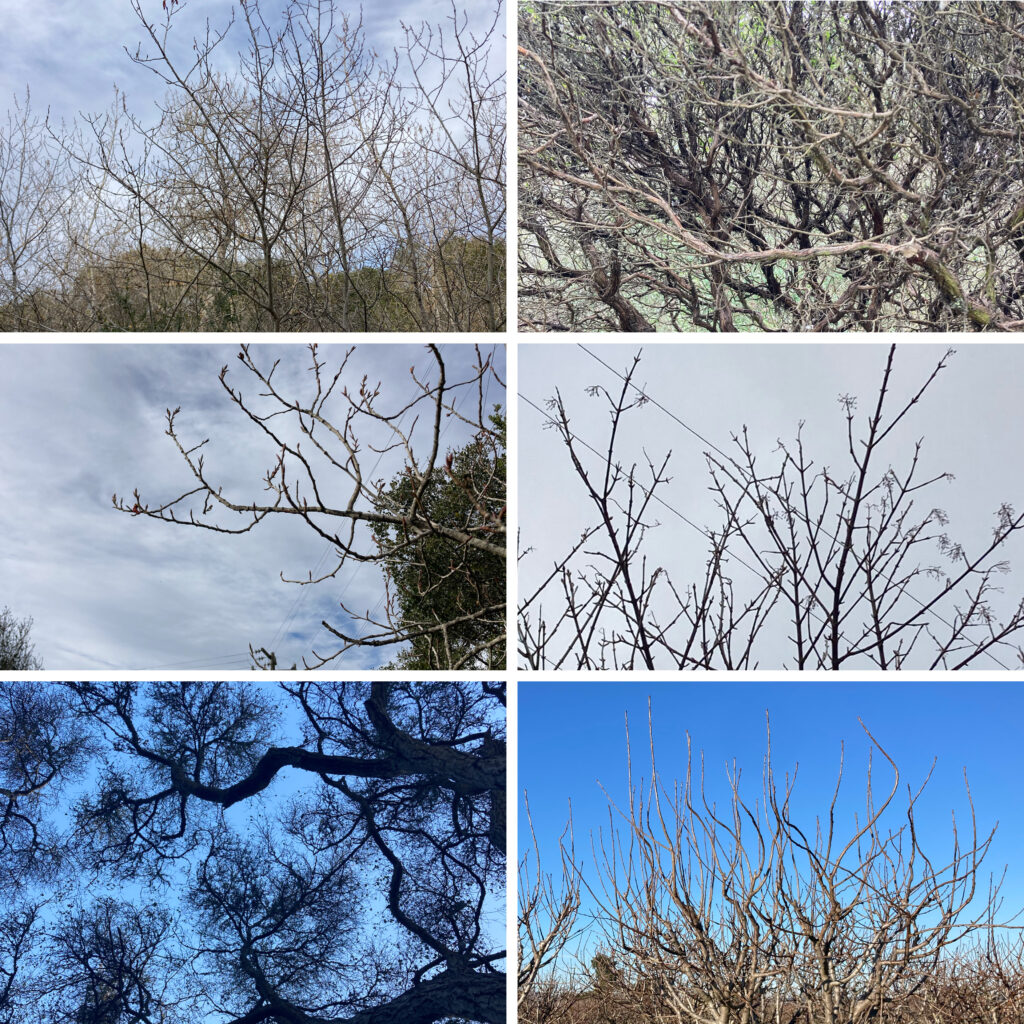
What tree is that, I wonder? Hmm, I don’t see any leaves on the tree to clue me in. I wonder if I sketch it, I can check back later.
I notice the ginkgo branches have a shape that is unique and different from the maple or sycamore.
The apple tree is shaped differently from the pear tree.
The willow has long slender branches, while the walnut has stocky stubby branches.
The poplar had distinctly long buds that alternate on branches while the Japanese maple have tiny buds that are paired (opposite on the stem).
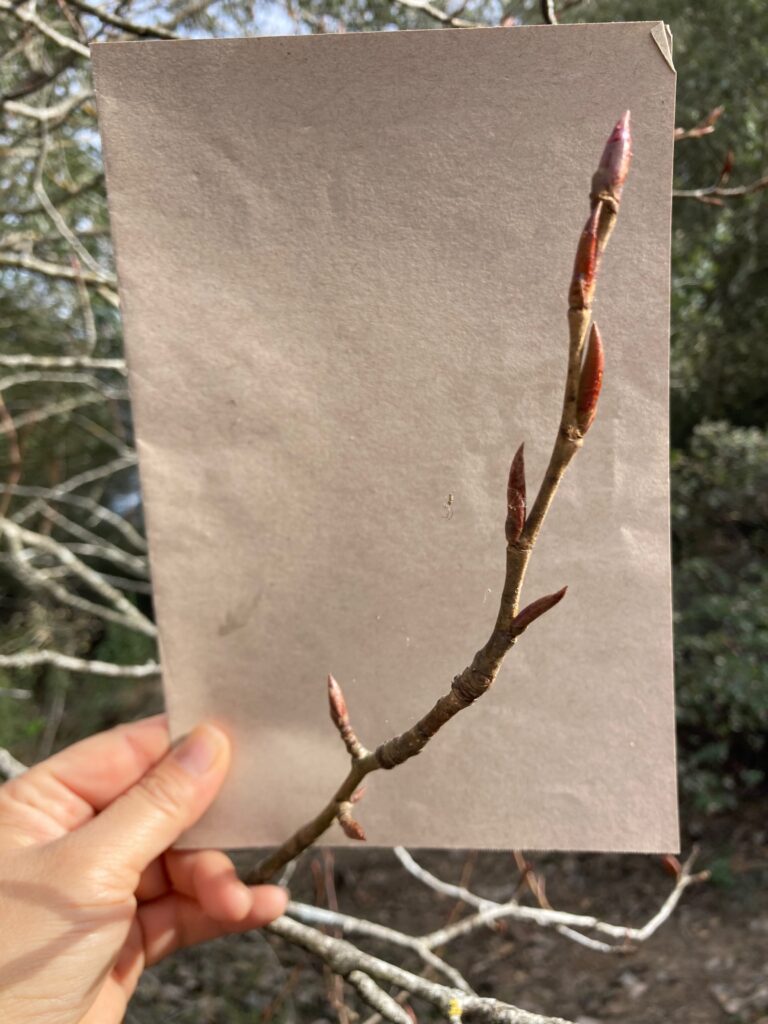
I can see how many limbs or trunks a tree has. Or if the color of the bark changes from root to crown.
Vacated nests from birds or squirrels stand out as a cluster of dried leaves in the bare branches. These are clues telling us to pay attention to these trees in the spring and summer for the residents who might return.
And its not just trees, but deciduous shrubs reveal similar information. Poison oak has a distinct look to its branches, so I can sort of tell them even without leaves. Red osier dogwood had cranberry red smooth alternate branches and willow has golden branches studded with buds.
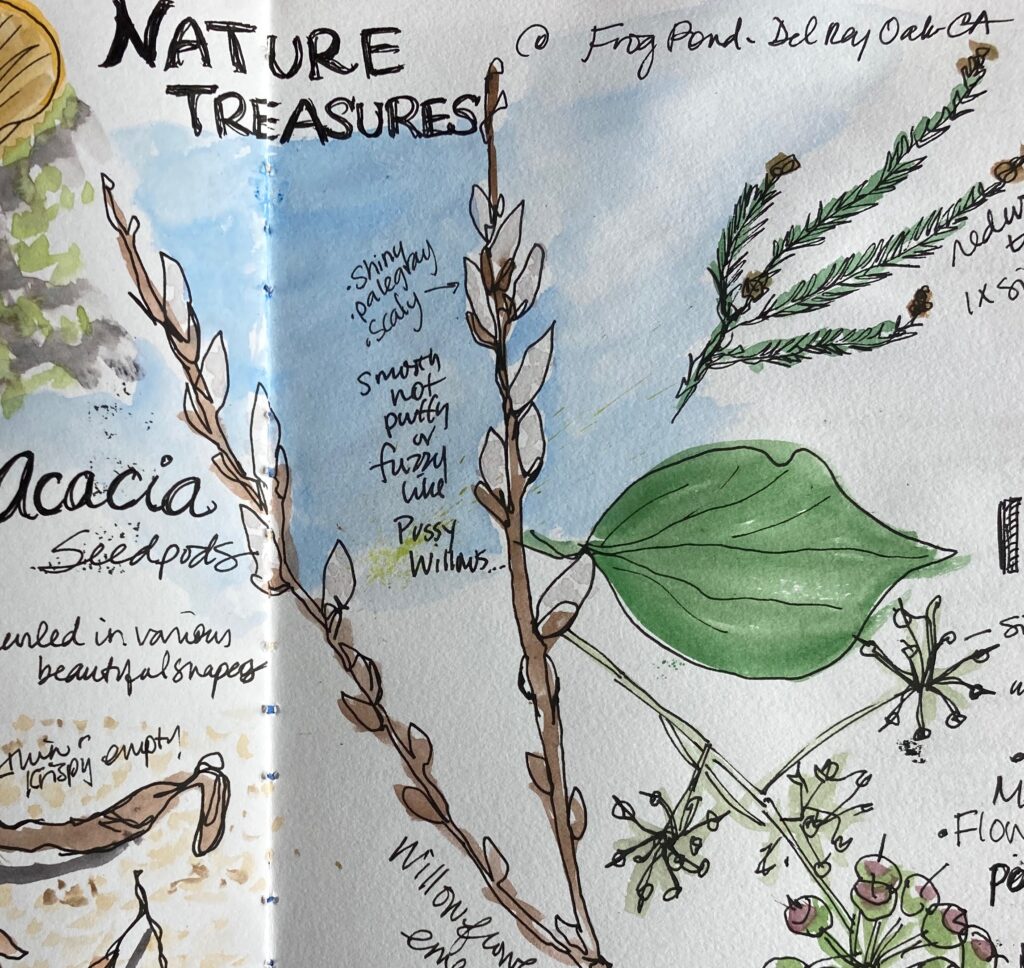
One thing I like to nature journal are the bare branches, and recording how the tree changes over time.
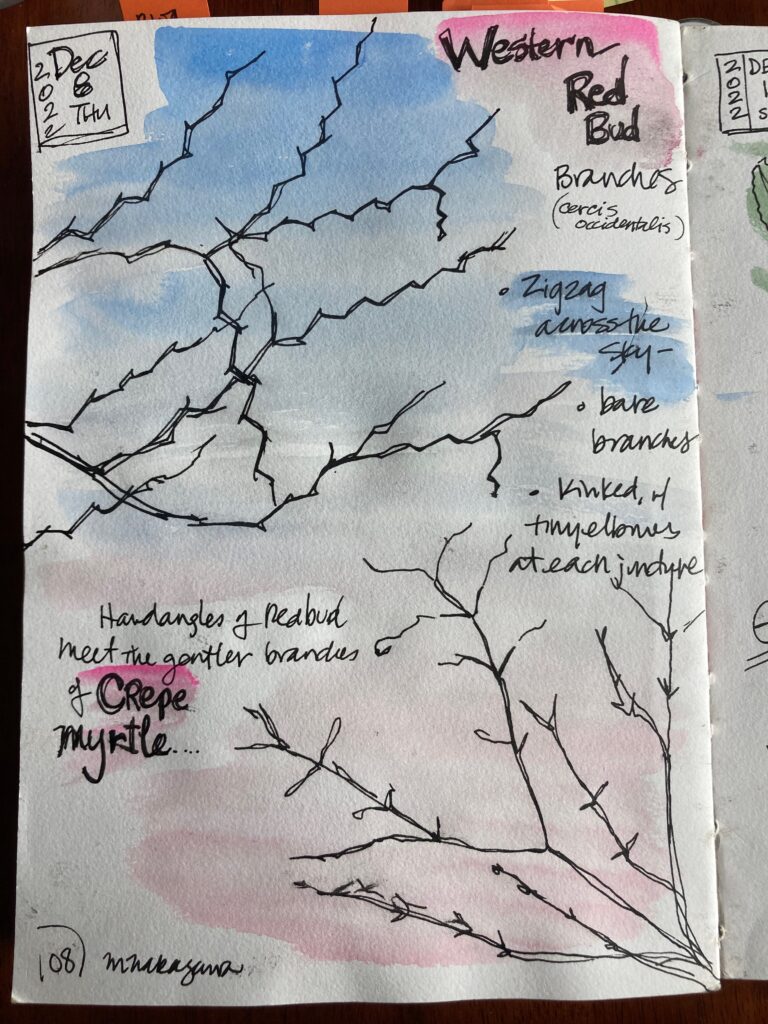
No two trees are alike
Now, not only is there a visual difference between species of trees (like oak versus maple versus walnut), but you can see the difference between individual trees too!
In a nearby forest, I gaze up and ancient Monterey pines. I see that each tree is unique and that I could tell them apart. Their history is told in the shape of the trunk, or density/sparseness of branches, missing limbs, scars from fire or animals, the leaning boughs, or branches that have been trimmed away.
In the decades or centuries they have been standing in this exact spot, they’ve experienced so much.
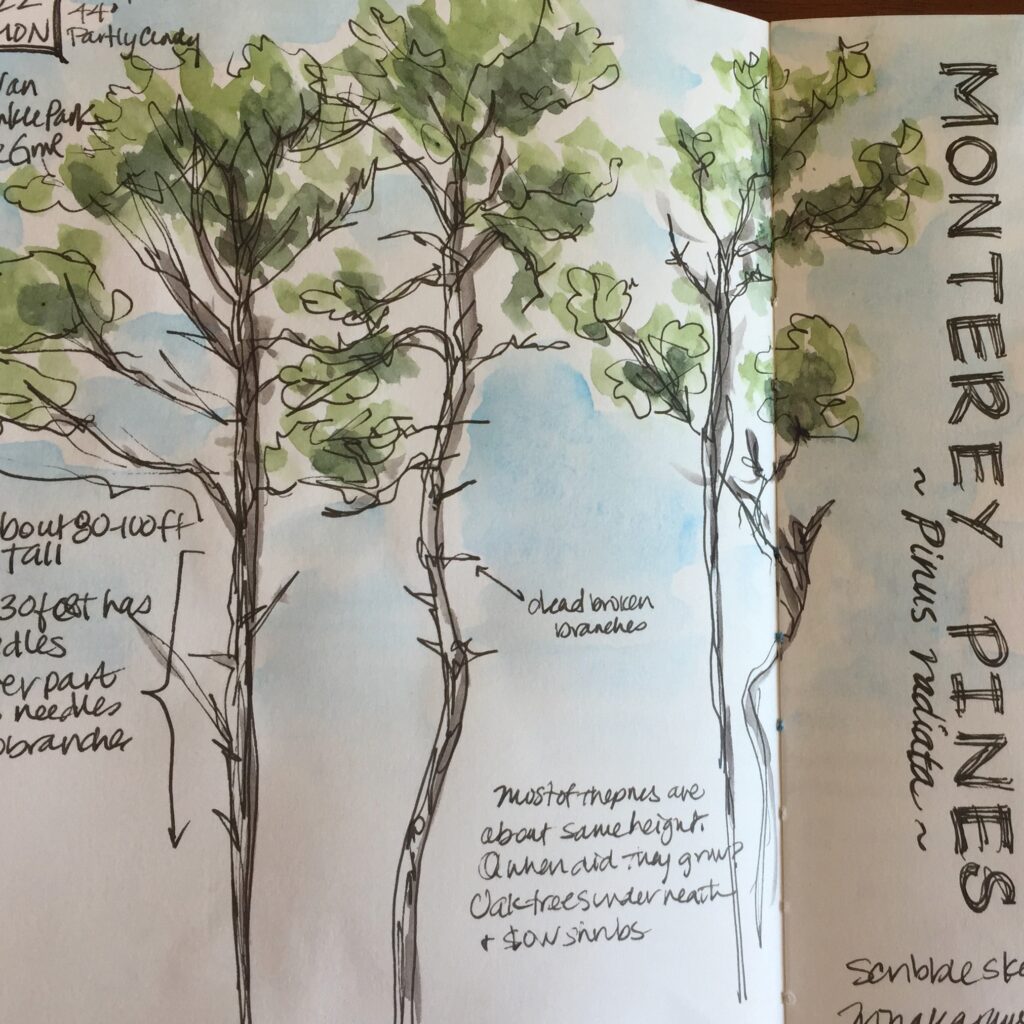
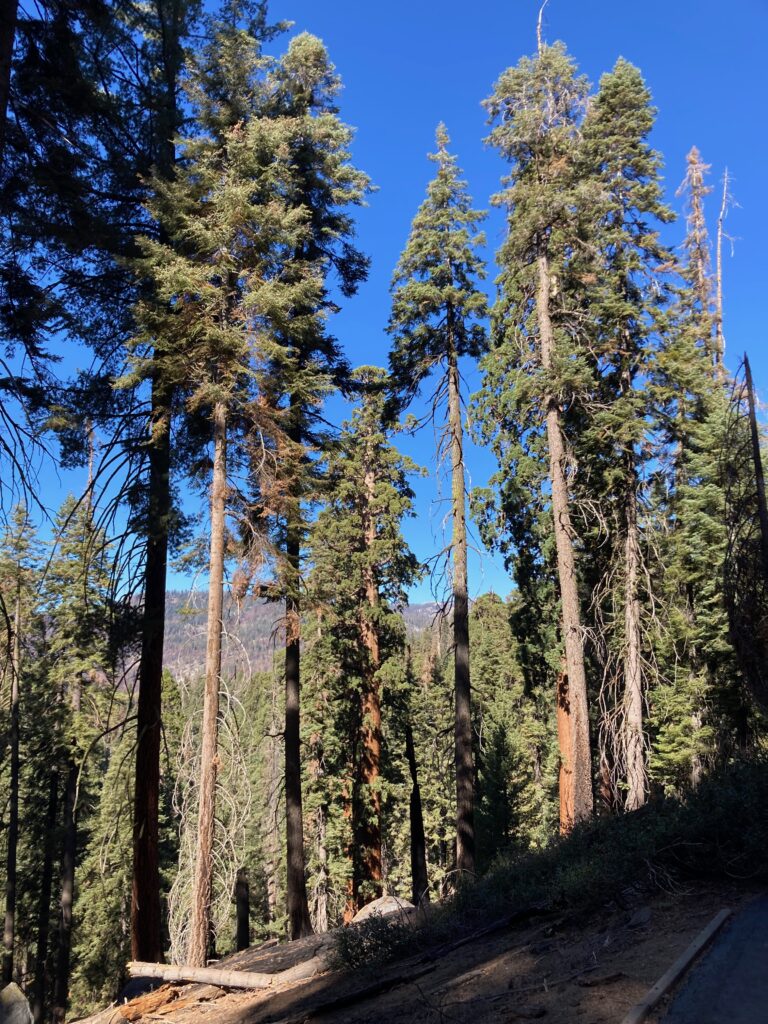
When we take the time to stop and take a closer look, we will see so many things that we were never aware of before. Nature journaling is a practice that expands your awareness, sense of wonder, and brings calm and sense of replenishment.
If we pay close attention to its entire structure- its body- we can read the story of its life. Winter resting trees can tell us their stories if we only stop and give our attention.
Discover for yourself: go out to see trees
Now, I invite you to go out in nature– or look out the window.
Do you see leaf-less or deciduous trees?
Notice how the branches are shaped. And now, find another tree- either the same kind or a different species.
Do its branches look the same as the last?
What direction do they grow? Are they upright or growing sideways?
Are there remnants of last season’s leaves or new buds forming?
Do you see any nests– or clusters of leaves concentrated in one spot?
What color is the bark and branches?
What is the shape of the tree?
What does it remind you of?
Save these observations in your journal
Now jot those observations in your nature journal. No need for full sentences or perfect grammar! And maybe a sketch of one branch or a scribble sketch of the tree.
Now, there is no need to know its name. You can find that out later. For now, we are focusing on seeing the tree- all of the tree, and giving it mindful attention.
Want to know more? Continue your observations.
Leaves are a really key part of the tree to help you with identifying it. While there are other clues (like bark) that can cue you into the name, leaves really tell us so much.
After the leaves grow in, it will be easier to identify it, or at least narrow down to a family.
But for now, through your personal observations, you are getting to know this tree in a much deeper way (that you can’t learn from a book or website) and cultivating a connection and appreciation.
Visit these trees again in early spring. What kind of leaves emerge? You can decide to follow this tree over the seasons, and get to know how it changes.
Because you are spending time in nature you are also benefiting from the calming and healing effects.
Go outside today and tell me what you see in the winter trees.
If you want to dive deeper into exploring trees, I’ll be offering a new course, Befriending Trees, that focuses on how to see trees at a new level, reading their stories and developing a connection. She my courses page here.
How to work with me: I also offer private and small group mentoring for developing a practice of nature connection and journaling.